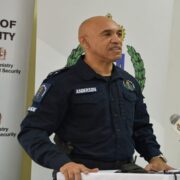Money Around Sport
Black Immigrant Daily News
(Trinidad Guardian) The Caribbean Premier League of Cricket (CPL) has completed its 10th year and its impact continues to be phenomenal both on and off the field. The ten consecutive years have been amazing. Not even COVID-19 was able to prevent the event, albeit with strict restrictions.
The CPL continues to provide regional cricketers with lucrative pay packages. Additionally, host countries have benefited from the positive effects of direct and indirect sport tourism and the economic activity related to hosting a mega sporting event. Promoted as the biggest party in sport, it brings colour and vibe to cricket. But even greater than that, it is the biggest regional event not only in sport but just the biggest regional event full stop! However, critics, and unbeknownst observers have intentionally or unintentionally at times failed to consider the positive impact of the CPL outside of cricket.
Countries are invited to bid for the right to host matches and assist the franchises. Therefore, the onus is on the respective countries to capitalise on their investments. It is for the countries to make the best of this investment. However, there are countries who have indicated that there is no commercial value from the CPL, as with their robust tourist industry, hosting the CPL has nothing to add.
This, however, is a short-sighted perspective, as the recently concluded CPL showed the attributes of play around sport. It was not just to 12,000 people who filled the Queen’s Park Oval, or the 18,000 who filled the Brian Lara Cricket Academy in Trinidad, or even the 14,000 who filled the National Stadium of Guyana that provided revenue. The full stadia, in fact, provided atmosphere, fervour, and excellent photo opportunities for politicians and those seeking public exposure. The major beneficiaries were those involved in activities around the cricket.
To start with, vendors both in and outside of the stadium, taxi drivers taking people to games or to attractions, restauranteurs, and hoteliers, all had a field day from St Kitts to St Lucia, Trinidad to Guyana. And this was not just from the over 200 persons directly involved in the CPL: teams and officials, organisers and marketing staff of the CPL, television production crews and commentators, etc., but from the hordes of people who travelled for the cricket.
There were not just local patrons but people from Europe, North America and other Caribbean countries who flocked to these venues. Included were franchise owners, some of whom are wealthy businesspeople, Bollywood stars and persons with interest not only in investing in regional cricket, but in the region in general. This was the forum for them to enjoy cricket and enjoy local hospitality while exploring their next business venture or investment.
Guyana grabbed the opportunity to organise a spectacular festive event around its leg of the CPL matches, inclusive of the knockout and final stages. Guyana is a country where optimism abounds amongst its citizens, palpable when talking to persons in all spheres of life. The idea and execution of the cricket festival was sheer brilliance. Not only did they invest in hosting two weeks of cricket, but there was also a grand gala dinner commemorating the 10th year of the CPL, and separate concerts featuring the likes of Beres Hammond, Spice, Machel Montano and chutney soca artists. The nightly food fairs, night markets and commercial activity exceeded the norm.
In fact, for the month of September, there was a 91% increase in visitor arrivals, with over 23,000 persons entering the country. The vast majority were visiting for the cricket and activities around cricket. Not only were all hotel rooms filled, but an organised system whereby persons could stay in local homes was successful. Not only did Georgetown benefit, but excursions into the interior of Guyana provided income to those who transported and those who hosted the hordes of visitors who paid handsomely for these excursions.
The energetic President, Mohammed Irfaan Ali, was the mastermind behind Guyana hosting the final leg of the CPL and the cricket carnival. He attended all of the evening matches and sat among the crowd in the stands as opposed to occupying the comfort of the Presidential Suite. He socialised at venues in Georgetown, ensuring that all his citizens and visitors had personal access to him. The way Guyana conducted itself during the two weeks of cricket begs the question now as to what was and is going through the minds of those who shun investment in the CPL.
The four countries that hosted CPL matches this year would have experienced financial benefits from increased arrivals and their related economic activity. With side shows and other events put on privately (even by cricketers), the benefits would have exceeded the norm. Guyana pivoted strategically to capitalise on all the possible benefits of hosting a sporting event. The West Indies missed this opportunity in 2007 when it hosted the ICC World Cup. However, the approach taken by Guyana can serve as a model for all future host countries.
The benefits of such investment are both tangible and intangible. Having spoken to the tangible, nationalism, patriotism, and even feelings of self-importance and self-worth are best brought out by war and sport. We are in a region where we do not believe in the former but have not fully exploited the latter. Which politician would not want to be in the middle of a full stadium where everyone is cheering and having a good time? Not only is there a good vibe, but there is enormous goodwill amongst all involved. There is national exposure for those watching on television or witnessing events on the ground. The influx of a mix of people with diverse backgrounds can only enhance the hosting country. For those players and visitors from overseas, it sells the idea of returning for a prolonged holiday. For those involved in business, it provides an opportunity to introduce them to opportunities on the ground. Whereas only some of the intangible benefits are mentioned, many more remain unidentified.
The opportunities around sport must be seized. The 10th edition of the CPL has provided a template for effective and efficient organisation for future host countries. One hopes that all countries acknowledge the benefits that can be gained. It is not just about money made in sport, but money made around sport.
Dr Akshai Mansingh is Dean, Faculty of Sport, The UWI. He can be reached at [email protected]
NewsAmericasNow.com











